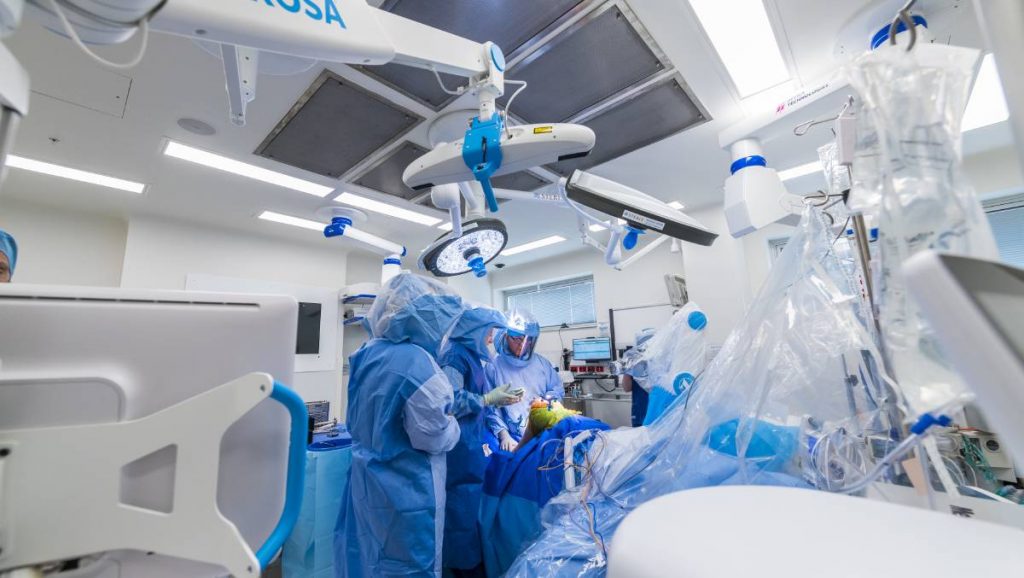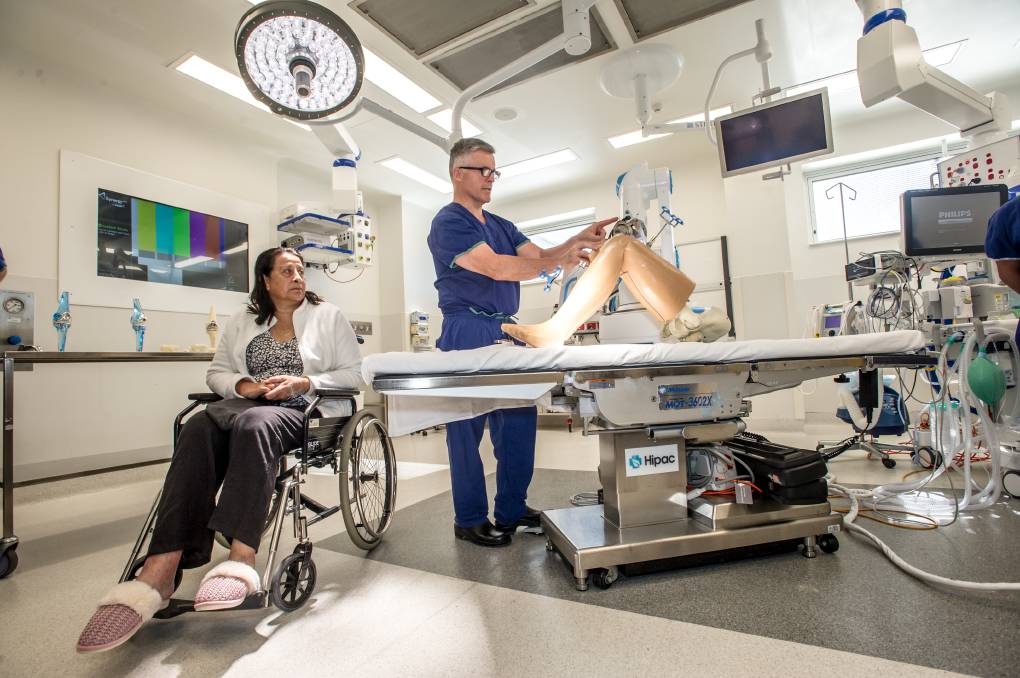Orthopedic surgeon Brendan Klar and Beverly Webb of Monash, who had the first knee replacement done by a surgical robot. Picture: Karleen Minney
Beverly Webb was standing in kitchen at work last year when her right knee gave way and she fractured her tibia.
It was strangely perfect timing because Ms Webb had only just sat down with orthopaedic surgeon Dr Brendan Klar to discuss total knee replacement surgery after putting it off for so long.
Ms Webb was the first Canberran to have total knee replacement surgery partly performed by a robot on Saturday morning.
The National Capital Private Hospital revealed its new robot knee surgeon to the public on Tuesday, with Ms Webb one of its first patients.
Ms Webb, 61, said her bad knee had been holding her back from spending time with her grandchildren, going travelling or even just enjoying the beach.
“You restrict yourself,” she said.
“I couldn’t get up and and down off the ground. It restricted everything, going shopping, every little thing.”
Just the month before fracturing her tibia, Ms Webb had sat down with Dr Klar.
“He said ‘You know, we’ve got this brand new machine’,” she said.
Dr Klar told her the accuracy of the surgery under the knife of the robot could improve her recovery time and reduce the likelihood of needing future surgery.

ROSA, the robot, didn’t perform the surgery directly, but assisted Dr Klar by holding the tools in place, providing real-time 3D models of the patient’s knee and helping Dr Klar make extremely accurate measurements.
Dr Klar said while your average human surgeon might not pick up the fact the patient’s knee had moved one millimetre, ROSA does, and this tiny change could make a huge difference to a patient’s outcome.
“If you don’t do brain surgery accurately, it doesn’t go very well. If you don’t do knee surgery accurately, it makes it harder [for] the patient’s recovery,” Dr Klar said.
“So robotics give us that accuracy that we’ve been looking for.”
It also saves patients money by creating a 3D model of the knee from a simple X-ray, allowing patients to avoid a more costly MRI.
“That is then stored into the brain of the robot,” Dr Klar said.
These models feed into a global database, allowing surgeons across the world to pool their knowledge and help train new ones to operate.
ROSA was built from “the ground up” for total knee replacement surgeries, which made up 94 per cent of knee surgeries in Australia last year.
Dr Klar said a typical patient’s recovery would be three to four days, but he hoped ROSA would cut that down.
He said he had met a colleague’s patient in Europe who walked out of hospital the same day they had surgery by the robot, convincing him ROSA was the real deal.
Since Saturday, four other surgeries with ROSA have been performed. Ms Webb’s – the first – took 90 minutes, while the latest took 70 – but Dr Klar said he hoped to bring it down to 60 minutes, his own “freehand” time.
He said technology like ROSA made working in orthopaedics exciting.
Before the surgery, Ms Webb joked she danced on one and a half legs.
“Now, I can dance with two legs,” she said.

